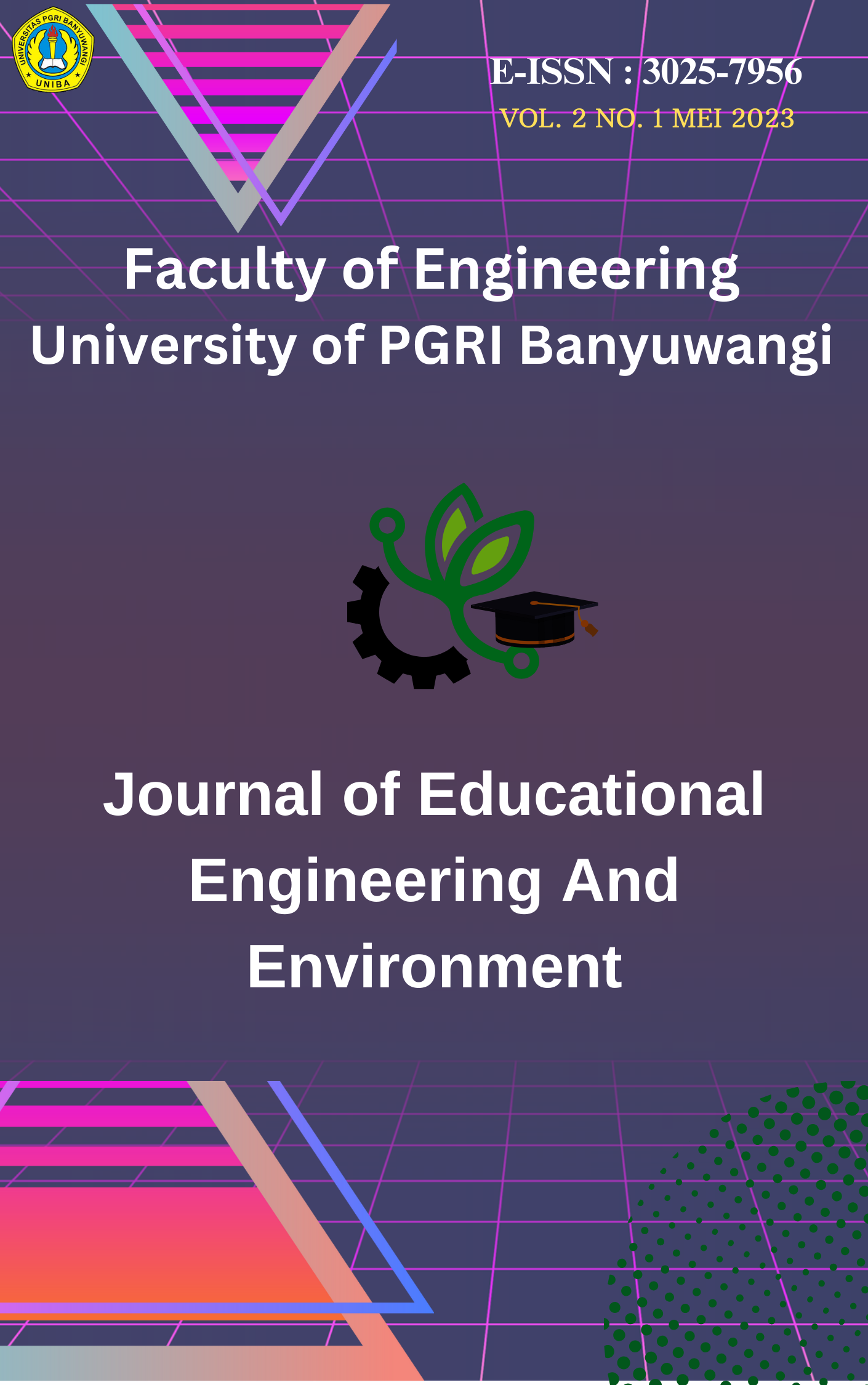Causes of Changes in Resistor Resistance Values in Wheatstone Bridge Circuits
DOI:
https://doi.org/10.36526/jeee.v1i2.2817Keywords:
Wheatstone bridge, resistor, measuring instrumentsAbstract
The Wheatstone bridge is an arrangement of electrical circuits for measuring a resistance of unknown magnitude. Applying the Wheatstone Bridge theory in the form of a series of electronic components consisting of resistors and strain gauges. In this study, resistors are used which are passive electronic components that have the property of inhibiting electric current. This aims to determine the value of the resistance loss produced by resistors that are used using several different values. Based on the study, it was found that the theoretical resistor is 150Ω after going through the measurement, it turns out to be 120Ω with a resistance loss of 20%, the 560Ω resistor after going through the measurement, it turns out to be 340Ω with a resistance loss of 39%, the 1000Ω resistor after going through the measurement, it turns out to be 570Ω with a resistance loss worth 47%, the resistor is worth 330Ω after going through the measurement it turns out to be worth 220Ω with a resistance loss of 20%, the resistor is worth 100Ω after going through the measurement it turns out to be worth 80Ω with a resistance loss of 20%. Based on the calculations, the difference in value is obtained between theoretical calculations and using measuring instruments. This is due to several factors, namely measuring instruments that are less valid so that it is necessary to carry out a validation test of the tool and the type of component being measured must be in a stable state. The resistance loss resulting from this study is due to several of these factors.
References
T. Juwariyah and Y. Djaya, “Analisa Resistivitas Kawat Penghantar Ditinjau Dari Metode Jembatan Wheatstone Dan Metode Hukum Ohm,” Bina Teknika, vol. 12, no. 2, pp. 239–244, 2016.
Sutrisno, Elektronika, Teori Dasar dan Penerapannya, Jilid 1, Jilid 1. Bandung: ITB , 1986.
N. Ardika et al., “Pengaruh Jenis Material Fix Resistor Terhadap Waktu Pencapaian Kesetimbangan Jembatan Wheatstone Dalam Memperoleh Nilai Regangan Material Influence of Fix Resistor Material Type Toward Achievement Time the Balance of the Wheatstone Bridge in Getting Value”.
Y. Apriani and T. Barlian, “Inverter Berbasis Accumulator Sebagai Alternatif Penghemat Daya Listrik Rumah Tangga,” Jurnal Surya Energy, vol. 3, no. 1, pp. 203–219, 2018.
I. Jaelani, Sompie R S, and Mamahit D J, “Rancang Bangun Rumah Pintar Otomatis Berbasis Sensor Suhu, Sensor Cahaya, Dan Sensor Hujan,” Jurnal Teknik Elektro dan Komputer, vol. 5, no. 1, pp. 1–10, 2015.
N. Nurhayati, “Penentuan Nilai Hambatan dan Hambatan Jenis pada Arang Batok Kelapa dan Arang Kulit Pisang dengan Metode Eksperimen,” CIRCUIT: Jurnal Ilmiah Pendidikan Teknik Elektro, vol. 4, no. 2, p. 96, Aug. 2020, doi: 10.22373/crc.v4i2.6510.
Downloads
Published
Issue
Section
License
This work is licensed under a Creative Commons Attribution-ShareAlike 4.0 International License.





















